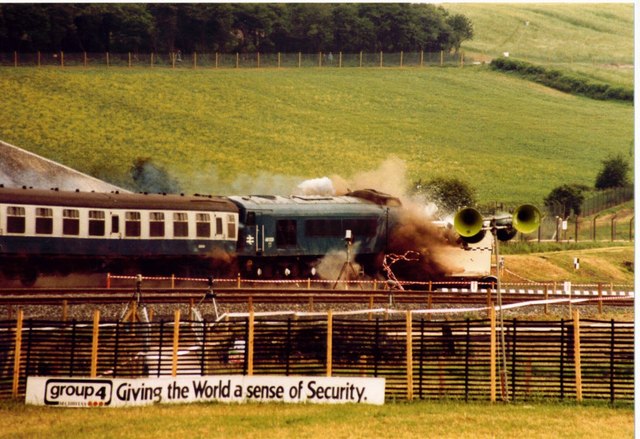POSTED 28.12.16
Whilst our team of engineers and scientists are experts at providing quality structural integrity to clients in all ranges and sizes of services, EASL’s interests don’t just start and end with our work. In a series of blogs, our resident rail enthusiast Andrew Inkersole shares his interest in British Railways, and the cross-over this can often have with our industries of expertise.
Nuclear Flask Crash Test
Below, Andrew recalls the nuclear flask crash test of 1984.
Two of my colleagues recently attended a short course on impact and blast effects at the University of Manchester. Given my interest in railways this got me thinking about an event I remember from my childhood perhaps famous in the power generation sector but infamous in rail enthusiast circles. This was the staged nuclear flask crash test at the then British Rail’s Old Dalby test track on 17th July 1984. The Central Electricity Generating Board orchestrated the crash deliberately, aiming to showcase to the public that a nuclear waste flask could indeed endure the impact of a rail crash.
The locomotive that held the rather dubious honor of leading the train, comprised of a brief line-up of three Mark 1 coaches, was the robust Derby-built diesel-electric Class 46, designated as 46 009. In railway circles, this locomotive garnered the moniker “Peak” as a common practice, inspired by an earlier class iteration (Class 44) that took its name from mountains. Temporary grandstands shot up, catering to the invited guests and the press in attendance. The BBC news footage vividly captures their enjoyment of food before the eagerly anticipated main event!
Leak tests after the collision showed that, as expected, the flask (which I believe contained steel rods and had been pressurised with water), had not suffered a leak. The Peak was not so lucky! Designed during the late 1950s and early 1960s, the Class 46s took form with 56 units of the class coming to life between 1961 and 1963. At that time, the concept of impact and “crash worthiness” hadn’t yet received substantial attention. In my next blog I will give some thoughts on how such considerations have developed in the railway industry over the interim years and also on the suitability of the crash test to truly demonstrate the impact resistance of a flask. As an aside, the flask used is currently on display outside the training centre at Heysham Power Station.
Impact specialists would define the Peak and its trailing load as a soft missile. These have a lower crushing strength than the failure strength of the target but this does not mean that they cannot deliver a higher load than the failure strength of the target. The reason is that the impact momentum of the missile delivers an impulse to the target and the higher the impact velocity, the higher the momentum and the lower the contact time. The resulting peak (no pun intended!) and average loads rise rapidly with impact velocity and can be much greater than the crushing strength of the missile.
Do you remember the 1984 test? Were you there? Let us about it over on twitter @easlstress and take a look below at some of our other blogs.
References
http://www.old-dalby.com/Crash.htm
The University of Manchester, Impact and Blast Effects: Theory, Analysis and Design, course notes, 31/10/16 to 2/11/2016.

Get in touch




